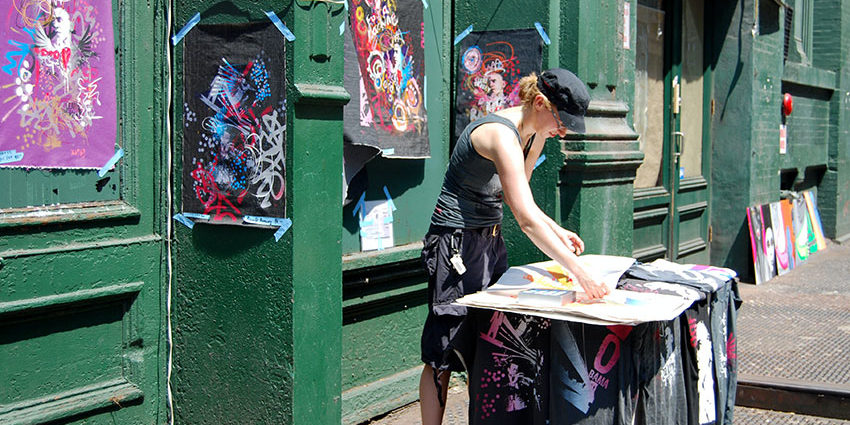“In thinking about my life over the last decade I’ve found myself seriously reconsidering the old fashioned, uncomfortable term “change of life”. I believe that a person can change their life, sometimes subtly and gradually, and sometimes more drastically. “
The pandemic has reminded me of how lucky I am to be an artist – an approach to life that allows me an enjoyable and productive way to use my time. With our prolonged “sheltering in place” a number of friends have taken up a new art practice. With our change of lifestyles, many established artists are exploring and diversifying their approaches to art. Making art can be extremely satisfying and help a person see and experience the world differently. It brings what’s inside of you out, and, what’s outside of you, in. A new year is an ideal time to re-energize by trying something different or new to you. There are many possible points of entry into art and they will all help you to see things differently and become more confident working with your hands.
First steps
Most art classes begin with the premise that learning art means learning to see differently. This process generally takes place through study and focus on art making, and encompasses more than drawing. To launch your own artistic adventure, consider your personal inclinations, existing skills, and work space. Try using different types of art materials and approaches to get a sense of what you enjoy. There are endless options available – consider learning photography, collage, sewing, mosaic, sculpture, ceramics, jewelry, furniture, drawing, painting, assembling, video, or performance art. Since galleries and museums are now virtual there’s boundless free inspiration available. Guidance through YouTube videos can help you learn practically everything. Art making can be a solo or a group activity. Some projects are ideal for families to work on together.
Here are some suggestions for getting into your creative zone. These approaches have worked well for people I know:
Getting started
- Convert an extra space in your home into a place for doing art projects. Tip: A garage is ideal.
- Buddy up with a friend or a family member to check in or work together on your art projects. This will help you stay motivated, problem solve together, share resources, and compare results. Tip: Articulating suggestions starts you on the path to learning how to give an art critique, a useful tool for all artists.
- Take an online course based on the book Drawing on the Right Side of the Brain to help you overcome your artistic barriers. This is a tried and true method for newbies at any age. It’s about thinking a different way.
- If you are serious about learning classical art, you might take an Atelier approach and work from classical art using sculptures and photos to make accurate copies. This is another tried and true technique for making art that can look quite accurate.
Creating
- Try your hand at collage art (2-D art) and feel better about using your old papers by recycling them into collages. Check out International Collage Day in May! Tip: To make your collages last a long time use archival glue.
- Make an assemblage (3-D art) using found objects and broken junk. More recycling! When you assemble your stuff into a sculpture, it is called an assemblage. Tip: Use very strong glue and clamps while drying.
- Thinking Japanese, the art of Origami – or paper folding – can provide quick and beautiful results. Tip: This could be a fun family project.
Drawing
- Sign up for zoom model drawing sessions or classes and you’ll experience working with professional models, see what others draw, and enjoy a chance to discuss materials and techniques. There are hundreds of these sessions taking place daily all over the world and they are all free or inexpensive. Tips: To get started sign up for a free zoom account and a Venmo or PayPal account to pay models (most are sliding fee scales). Pull together art supplies or set up your iPad for art making. If you use an iPad try the easy, inexpensive app Procreate. Find groups on Facebook Meetups. Check out “art process videos” on YouTube (my channel shows many drawings I’ve made on an iPad in Procreate)
- Use films, TV series, and Zoom calls to turn your friends and family members into life models. Tip: If drawing doesn’t appeal, try plasticine modeling clay to make small, quick, figures or faces.
Handicrafts
- Upgrade your bread baking into an art with fancy tricks – like braided breads – or move into cakes and cookies and decorate them.
- Bread dough art and jewelry are easy and fun to make with basic materials – made up of a mixture of torn up sliced white bread, white glue, and acrylic paint – you just mix, mold, and bake!
- Make your own beads out of just about anything (bread dough, clay, recycled paper). Learn the basics of beading. Tip: You can buy every type of bead and finding (closures, pins, chains, etc) and jewelry making tools online to make what you want.
- Make candles, monoprints, quilts, linoleum prints, or wood carvings. The list goes on and on.
Art-making techniques are available free on YouTube and on “How To” websites and through inexpensive virtual classes. Try to learn something that you have been afraid to tackle. As it’s going to be a while until you can travel or take in person classes (at least that’s the case in California) so stay home, stay safe, and make some art.
Susan R. Kirshenbaum
Art. Creativity. Lifestyle. Mental Wellbeing.
Photo by @lgtts.






